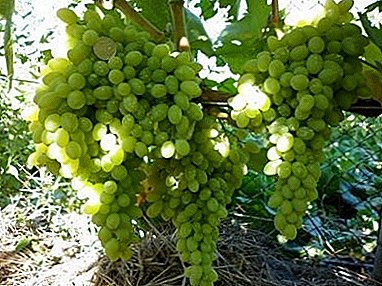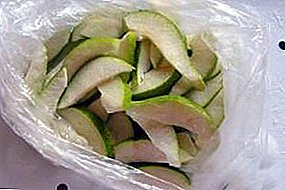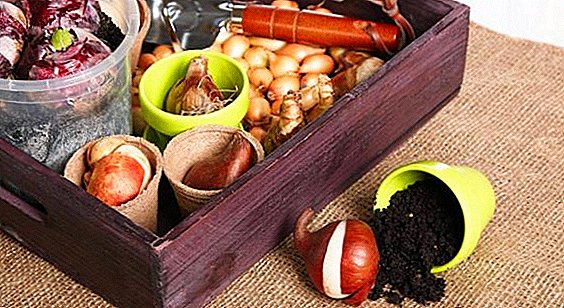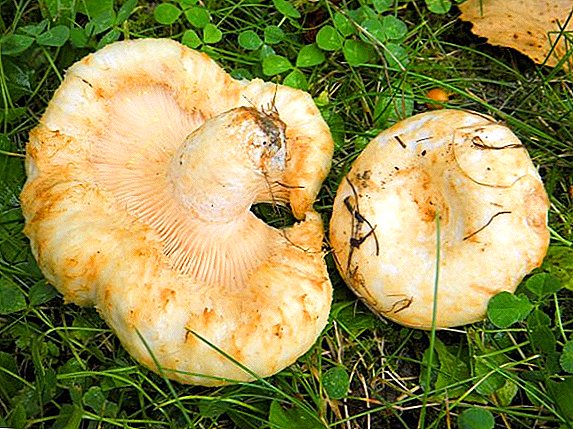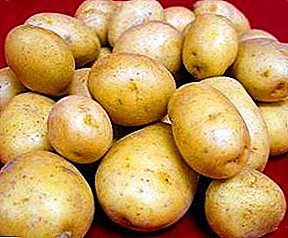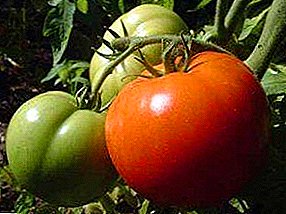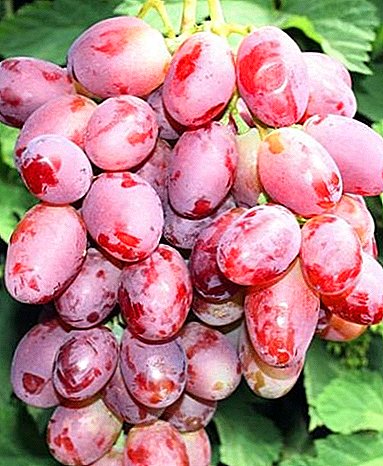
Libya is one of the youngest and not very famous varieties.
However, he has already earned the recognition of many gardeners as promising and worthy of attention.
Thanks to its excellent properties, Libya is rapidly gaining popularity. and is perfect for growing at their summer cottage.
Description varieties Libya
Libya is a hybrid pink variety of table grapes. Differs in magnificent taste and beauty of clusters. The berries are very sweet, with a pleasant nutmeg. The varieties Velika, Romeo and Chocolate are just as delicious.
Appearance of grapes
Variety Libya has a great power of growth when grown on its own roots. Vine ripening is very good. Bisexual flowers do not require pollination. Cuttings are taking root perfectly. For this variety, short pruning is optimal, about 2-4 peepholes. The flowers of the flowers also show Vodogray, Finger's Manicure and Lyan.
 One of the main advantages of Libya are very large clusters, weighing about 1 kg. They are loose, rather loose, and often shapeless.
One of the main advantages of Libya are very large clusters, weighing about 1 kg. They are loose, rather loose, and often shapeless.
A characteristic feature of this variety is considered to be the different color of the berries in one cluster due to uneven ripening.
The berries in Libya are very large, weighing up to 13-16 grams, round or oval, pale pink. The flesh is juicy, pinkish, with a high content of sugar and a slight taste of nutmeg. The skin is very thin, melting in the mouth. In the berries there are 2-3 fairly large seeds, which are easily separated from the pulp.
Equally large clusters and berries can boast except the Original, Delight and Bazhena.
Breeding history
The grape variety Libya is the result of many years of work by the famous Ukrainian amateur breeder V. V. Zagorulko.
Libya was obtained in the process of crossing Arkadi’s early table variety of white grapes with the pink medium Flamingo.
The hand of the same breeder belong to Asya, Ruta and Viking.
The variety Libya has been developed quite recently and has not yet become widespread. It is included in the Ukrainian State Register in 2011 and is recommended for cultivation in Moldova, Ukraine and southern regions of Russia.
Libya does not have a high frost resistance, but under the condition of a good shelter, it can well be grown in more severe climatic conditions. Thanks to its early ripening period, Libya also easily grows in central Russia and Belarus.
Early ripening are also Gordey, Harold and Pleven.
Specifications
The grapes of Libya belong to very early varieties. From the appearance of the first ovaries to the full maturation of the clusters, it takes about 100 days. This variety does not like overloading and, if properly shaped, produces an excellent yield. The same signs are shown by Muscat Dievsky, Bogatyanovsky and Demeter.
Another indisputable advantage of Libya is its rather long shelf life. After removing the clusters from the bush, they retain their properties for more than a month and tolerate transportation well.
 With proper care, the Libya variety always produces consistently high yields. True, frost resistance is no different.
With proper care, the Libya variety always produces consistently high yields. True, frost resistance is no different.
It withstands frosts up to -20-21С, not lower, and requires careful wrapping for the winter. But despite this, it is successfully grown in areas with a moderately cold climate.
The main condition for a good harvest: choose the right place for planting. Libya grows well on light loam, in a warm, but well-ventilated place, with maximum access to sunlight.
Among the shortcomings of this remarkable variety can only be noted the low resistance to such diseases as mildew and oidium. Due to the high sugar content in the berries, they are often attacked by wasps and birds.
A photo




Diseases and pests
Livia grape variety is often affected by oidium, a little less - mildew.
Of the pests for Libya, wasps are particularly dangerous. Phylloxera is not affected.
Oidium is dangerous because it affects the entire plant entirely. The disease begins with the appearance of a grayish mold on the leaves. Later it spreads to the inflorescences, shoots and berries. It is best to prevent the occurrence of this disease and carry out protective measures. A fungus that causes infection, in a short time can destroy not only the entire crop, but the entire vineyard.
The disease most quickly spreads in dry and hot weather. To avoid damage, it is necessary to carry out preventive treatment of the vineyard at least three times a year: with the appearance of the first 4-6 leaves, after the end of flowering and during the period when the berries appear. You can use colloidal sulfur or special protective biologics.
Mildew Libya grapes exposed to a much lesser extent, but it is necessary to carry out preventive treatments. The basic rule of protection against mildew is to ensure that the vineyard has good ventilation and proper pruning and stading. As a preventative, treating a shrub with 1% Bordeaux liquid at least three times per season helps well: before and after flowering, and before harvesting.
As a protective measure, you can plant several dill beds around the vineyard. This reduces the risk of infection and reduces the number of treatments. It is necessary and correctly to use mineral fertilizers. At the very beginning of the growth of shoots apply nitrogen fertilizer, and then - only potassium-phosphorus.
Do not forget about such common grape diseases as anthracnose, bacteriosis, chlorosis, bacterial cancer and rubella. These are frequent guests of vineyards and never hurt to take preventive measures against them.
A big problem when growing Libya is wasps. Due to the high sugar content and thin peel of berries, the variety is often attacked by wasps and birds.
For protection, you can use the shelter of the bush with a thin transparent mesh of polymeric materials or try to stretch several rows of fishing line or twine between the trellis.
It is necessary to remove all the wasp nests in the vicinity and place special traps near the vineyard. As such traps, you can use flat containers filled with honey or syrup mixed with an odorless insecticide.
Good help in preserving the harvest and gauze bags worn on ripening clusters.
It is important to regularly inspect and air such clusters in order to avoid their rotting.
Summing up, it can be noted that the Libya grape is an excellent variety for the dacha plot. He has a lot of advantages and has a very small number of drawbacks.
Perfectly suitable for cultivation in non-traditional areas for viticulture and does not require any special knowledge and skills. The main thing - good care and timely processing. Livia is extremely unpretentious and high yields, and huge sweet berries with an amazing caramel flavor like both adults and children.


